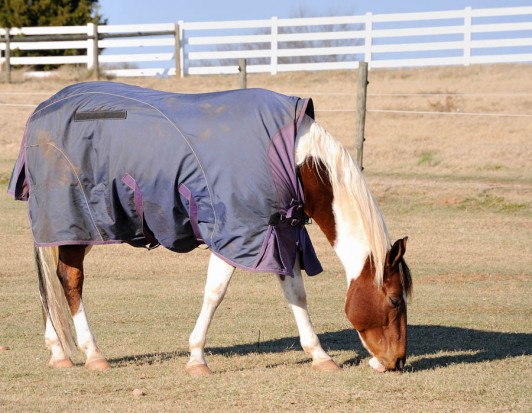

Acute moist dermatitis is also commonly referred to as “hot spots,” and they can potentially develop on any part of the body. They generally appear as patches that can vary from one to four inches across, and are most commonly found around the area of the neck, and around the ears. Hot spots can be painful, and are often characterised by an unpleasant smelling discharge that is yellowish in colour.
If your dog has been diagnosed with acute moist dermatitis or hot spots, or you are wondering about the condition and if you should be concerned, in this article we will look at some of the common causes of the condition, and what can be done to treat it. Read on to learn more.
Dogs that have very thick or long fur are those most likely to develop acute moist dermatitis, as the thickness or sheer volume of their hair tends to trap moisture. If your dog’s coat is in poor condition, particularly if it is knotted or matted up, your dog is also exponentially more likely to develop acute moist dermatitis in the areas that are in poor condition.
Aside from these environmental factors, acute moist dermatitis can be caused by a range of different factors, including:
The hotter months of the year are the main pinch point for development of acute moist dermatitis, as the warmth in combination with humidity or moisture on the coat can allow hot spots to develop.
If your dog has developed a patch of skin that sounds as if it may be acute moist dermatitis, your vet will examine the area and possibly take a skin scraping to rule out the possibility of a yeast infection or fungal infection. Hot spots can be painful for dogs, and some dogs that do not react well to investigation may need to be sedated in order to check out the area properly!
Once acute moist dermatitis has been diagnosed, the area will need clipping to remove the surrounding fur, and regular cleaning with a product such as Chlorohexidine or Betadine to clear up the area. Your dog may also be prescribed antibiotics to help with infection, and potentially, corticosteroids to promote healing.
While you may not always be able to prevent your dog from developing acute moist dermatitis if they are prone to it, there are a range of ways in which you can minimise the chances of your dog suffering from a flare up, or deal with a minor hot spot at home.
If you have not seen a hot spot on your dog before, always take your dog to the vet for a formal diagnosis, and to ensure that you are not confusing the condition with something else. If you are treating the condition at home, you should expect to see relief and improvement after a few days of starting treatment of any variety, and if you do not, again speak to your vet to ensure that you are doing everything right.
While you can usually effectively treat the physical presence of hot spots, it is important to try to suss out why they are developing on your dog in the first place; underlying issues such as allergic reactions or flea infestation that can lead to hot spots all need to be addressed in order to prevent recurrences.
 How To Keep A Welsh Corgis Coat Looking Good
How To Keep A Wel
How To Keep A Welsh Corgis Coat Looking Good
How To Keep A Wel
 Is The Neapolitan Mastiff Dog A Good Choice Of Pet?
Is The Neapolitan
Is The Neapolitan Mastiff Dog A Good Choice Of Pet?
Is The Neapolitan
 Health Issues More Frequently Seen In The Basenji
Health Issues Mor
Health Issues More Frequently Seen In The Basenji
Health Issues Mor
 Winter Horse Feeding & Rugging - What To Consider
Winter Horse Feed
Winter Horse Feeding & Rugging - What To Consider
Winter Horse Feed
 How A Dogs Behaviour Can Change With Old Age
How A Dogs Behavi
How A Dogs Behaviour Can Change With Old Age
How A Dogs Behavi
Copyright © 2005-2016 Pet Information All Rights Reserved
Contact us: www162date@outlook.com